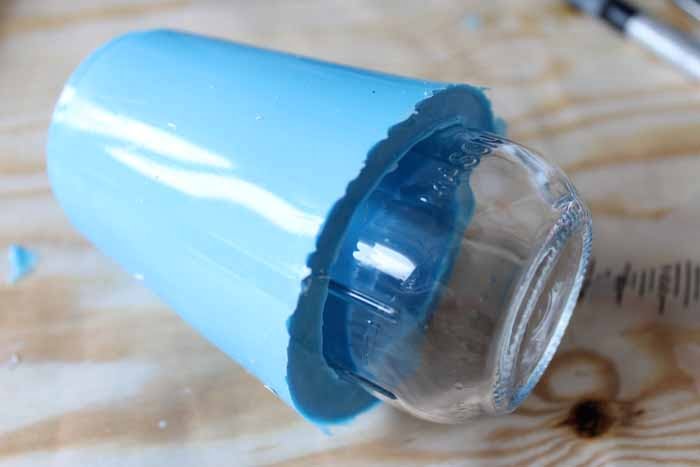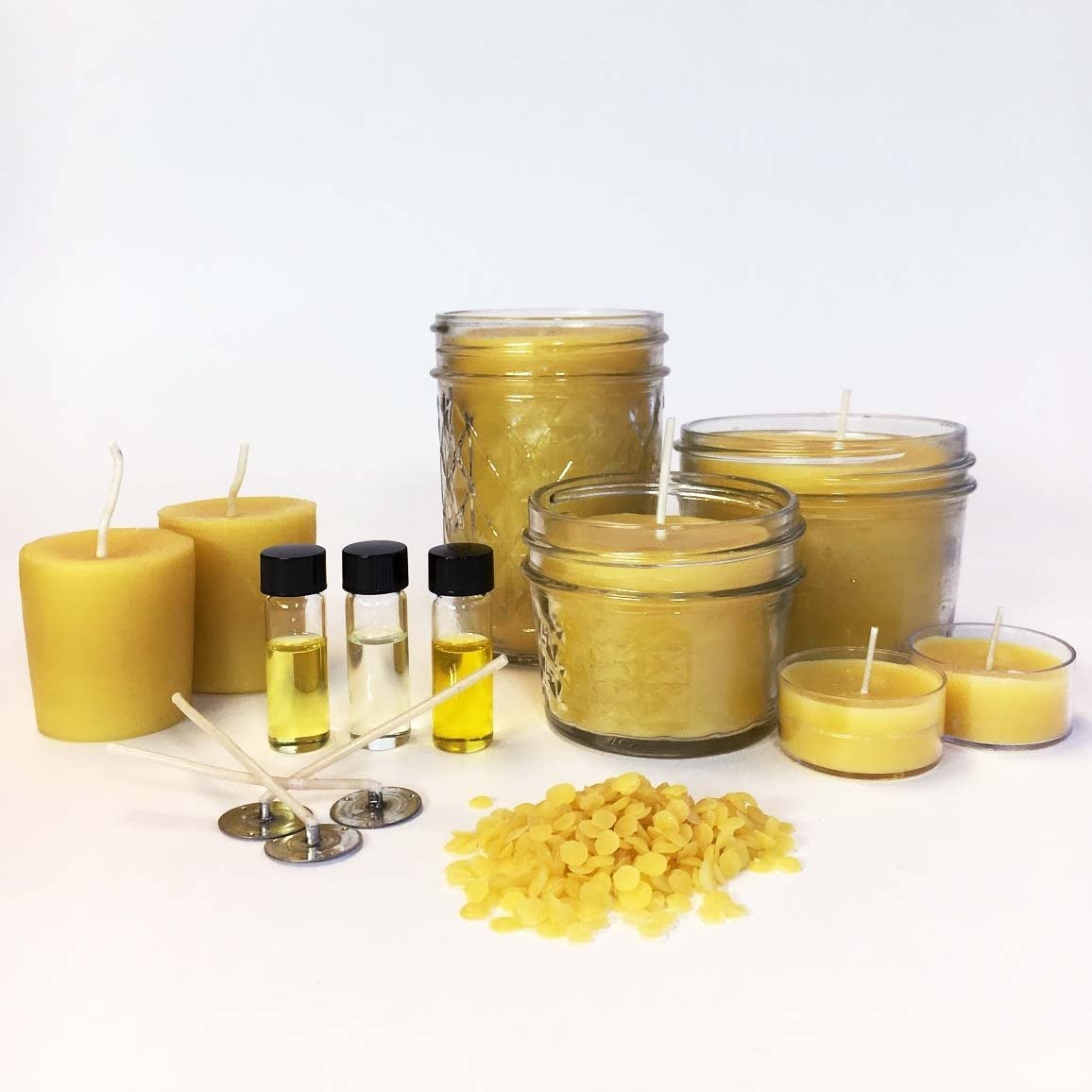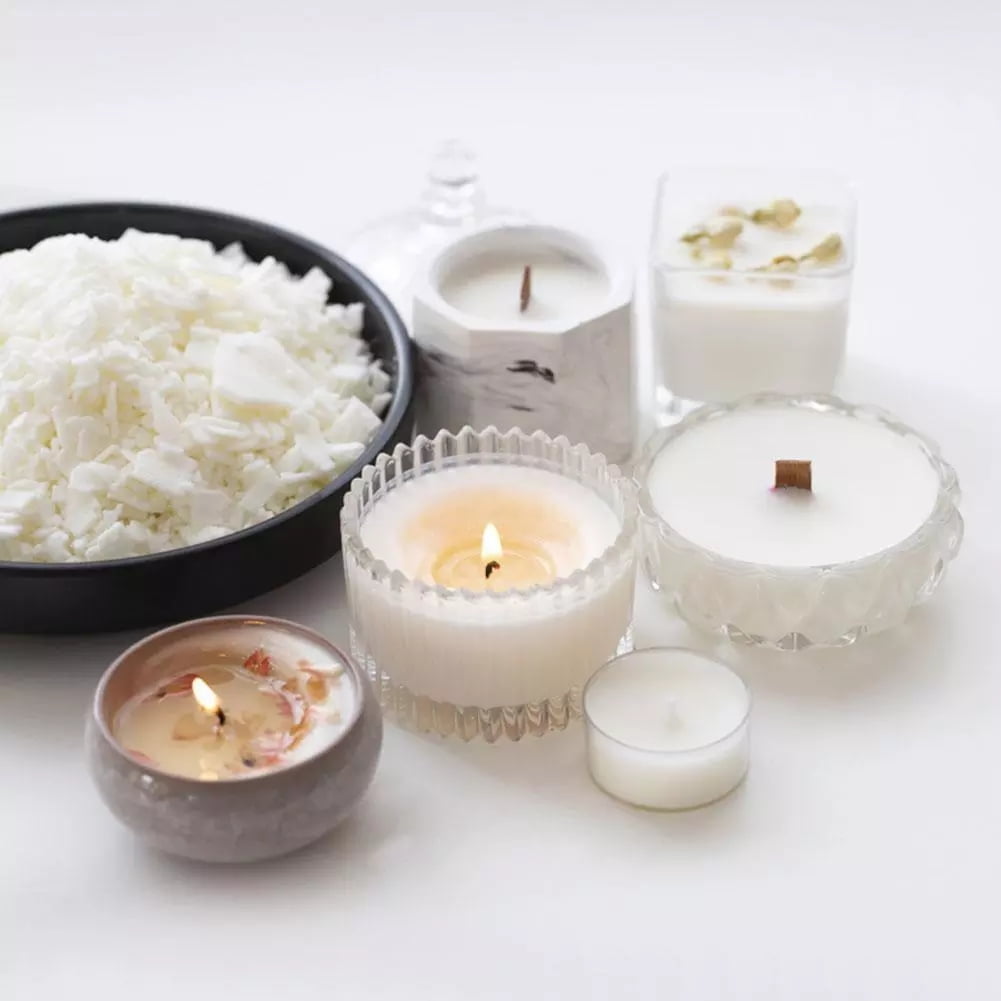Candle making is a popular and rewarding craft that allows individuals to express their creativity while creating beautiful and fragrant decor pieces. While wax, wicks, and molds are vital components in the candle making process, one should not overlook the importance of essential oils. These oils not only impart delightful scents but also enhance the overall ambiance and experience when burning a candle.
Essential oils are known for their natural aromatic properties and have been used for centuries in various applications, including perfumes, skincare products, and even for therapeutic purposes. When it comes to candle making, essential oils add a personalized touch by offering an array of fragrances to choose from. Whether you prefer soothing lavender, invigorating citrus, or warm vanilla, there is an essential oil that can transform your candles into aromatic works of art.
Understanding the different types of essential oils available for candle making is crucial in selecting the perfect scent for your creations. From floral notes like rose and jasmine to earthy aromas such as sandalwood or patchouli, there is an endless variety to explore. Each type of essential oil offers its own unique characteristics that can complement different moods or settings.
When choosing the right essential oil for your candles, several factors need consideration. The scent strength should be taken into account to ensure that it is neither too overpowering nor too subtle once the candles are lit. Compatibility with the chosen wax type is also important to achieve optimal fragrance distribution throughout the candle’s burn time. Lastly, personal preferences play a significant role in selecting scents that resonate with your taste and style.
Understanding the different types of essential oils
Understanding the different types of essential oils is crucial when it comes to candle making. With such a wide variety of essential oils available, each with its own unique scent profile and therapeutic properties, it can be overwhelming to know where to start. However, taking the time to familiarize yourself with these oils will allow you to create candles that not only fill your space with delightful aromas but also provide additional benefits.
Essential oils are derived from various natural sources, including flowers, fruits, leaves, seeds, and bark. Each source produces an oil with its own distinct aroma and characteristics. For example, lavender essential oil is known for its calming and relaxing properties, while citrus oils like lemon or orange have uplifting and energizing effects.
When choosing essential oils for candle making, consider both your personal preferences and the intended purpose of your candles. If you want to create a soothing ambiance for relaxation or meditation, you may opt for floral or herbal scents such as lavender, rosemary, or chamomile. On the other hand, if you’re looking to uplift and invigorate your space, citrus scents like grapefruit or bergamot may be more suitable.
It’s also important to ensure that the chosen essential oil is compatible with the wax you’re using. Some essential oils can cause discoloration or affect the burning characteristics of certain waxes.
To avoid any unwanted issues, do some research on how different essential oils interact with specific types of wax before incorporating them into your candles. Additionally, consider the scent strength of each essential oil-some are more potent than others and may require smaller amounts for a noticeable fragrance in your candles.
Factors to consider when choosing the right essential oil for your candles
When it comes to choosing the right essential oil for your candles, there are several factors to consider. Understanding these factors will help you create candles with the perfect scent that not only enhances the overall experience but also ensures compatibility with the wax you’re using and aligns with your personal preferences.
1. Scent Strength:
The scent strength of an essential oil refers to how strong its fragrance is. Some essential oils have a more subtle aroma, while others have a stronger and more potent smell. When choosing an essential oil for your candles, consider the desired intensity of the fragrance you want to achieve.
If you prefer a light and delicate scent, select an essential oil with a lower scent strength. On the other hand, if you want a more powerful and noticeable aroma, opt for an oil with a higher scent strength.
2. Compatibility with Wax:
Not all essential oils blend well with every type of wax. It’s important to choose oils that are compatible with the wax you’re using in order to ensure proper integration of the fragrance into your candles. For example, soy wax tends to work well with a wide range of essential oils due to its natural properties, while paraffin wax may require specific oils that can withstand higher temperatures without losing their aroma.
3. Personal Preferences:
One of the most exciting aspects of candle making is being able to personalize your creations according to your own taste and preferences. Take some time to explore different scents and find ones that resonate with you on a personal level. Do you prefer floral or citrusy scents? Maybe woody or spicy fragrances are more your style? By selecting essential oils that align with your personal preferences, you’ll create candles that truly reflect your unique personality.
By considering these factors – scent strength, compatibility with wax, and personal preferences – when choosing essential oils for your candles, you’ll be able to create beautiful and fragrant creations that enhance any space or occasion.
Recommended dilution rates for essential oils in candle making
One of the key factors to consider when using essential oils in candle making is the recommended dilution rates. Dilution rates refer to the amount of essential oil that should be added to a specific amount of wax in order to achieve the desired fragrance strength. This ensures that the scent is not too overpowering or weak.
The appropriate dilution rate for essential oils depends on various factors, including the type and quantity of wax used. Generally, it is recommended to use 6-10% fragrance load for most waxes. This means that for every pound (16 ounces) of wax, you should add 0.96 – 1.6 ounces of essential oil.
However, it is important to note that different waxes have different maximum fragrance load capacities. For example, soy wax can typically hold more fragrance compared to paraffin wax. It is advisable to refer to the manufacturer’s recommendations for each specific type of wax.
Additionally, it is crucial to consider personal preference and desired scent intensity. Some individuals may prefer a stronger scent and may opt for a higher dilution rate within the recommended range, while others may prefer a more subtle fragrance and choose a lower dilution rate.
| Type of Wax | Recommended Dilution Rate |
|---|---|
| Soy Wax | 6-10% fragrance load |
| Paraffin Wax | 6-8% fragrance load |
| Beeswax | 5-7% fragrance load |
It is important to carefully measure and weigh both the wax and essential oil when preparing your candle mixture in order to achieve accurate dilution rates. Using precise measurements will help ensure that your candles have a consistent fragrance and provide the desired sensory experience for candle enthusiasts.
Mixing and blending essential oils for unique fragrances
Mixing and blending essential oils is a great way to create unique fragrances for your candles. By combining different essential oils, you can customize the scent of your candles to suit your personal preferences or create signature scents for special occasions or events. Here are some tips and techniques to help you get started on mixing and blending essential oils for unique fragrances in candle making.
Understanding Scent Categories
Before you start blending essential oils, it’s important to have a basic understanding of scent categories. Essential oils can be classified into different categories based on their fragrance profiles such as floral, citrus, woody, herbal, spicy, and more. Knowing the scent categories will help you choose complementary oils that blend well together. For example, if you want to create a floral-scented candle, you can blend lavender, rose, and ylang-ylang essential oils.
Paying Attention to Fragrance Notes
Another factor to consider when blending essential oils is the fragrance notes. Essential oils have top notes, middle notes, and base notes that contribute to the overall scent profile of a fragrance. Top notes are lighter and evaporate quickly, while middle notes are more balanced and prominent in the fragrance. Base notes are heavier and linger longer. To create a well-rounded fragrance blend for your candle, aim for a combination of top, middle, and base note essential oils.
Start with Small Batches
When experimenting with blending essential oils for candle making, it’s best to start with small batches until you find the desired scent combination. This allows you to make adjustments without wasting large quantities of wax or essential oil. Mix small amounts of different essential oils in separate containers and keep track of the ratios used. This way, you can easily recreate successful blends or make changes later if needed.
Experiment and Keep Records
Creating custom fragrance blends is a creative process, and it’s important to experiment and have fun with it. Feel free to explore different combinations of essential oils and adjust the ratios until you achieve the desired scent. Keep records of your experiments by writing down the specific oils used and their ratios, so that you can replicate successful blends in the future.
Safely incorporating essential oils in candle making
Safely incorporating essential oils in candle making is crucial to ensure a safe and enjoyable experience. While essential oils offer a wide range of scents and therapeutic benefits, it is important to follow guidelines and take precautions to prevent any potential risks. Here are some important considerations to keep in mind when using essential oils in candle making:
Quality and Purity
When working with essential oils, it is vital to choose high-quality, pure oils that are specifically meant for candle making. Avoid using fragrance oils or synthetic oils as they may contain additives or chemicals that can be harmful when burned. Look for essential oil suppliers who provide certificates of analysis or third-party testing to ensure the purity and quality of the oils.
Proper Dilution
It’s crucial to dilute your essential oil properly before adding it to your candles. Most experts recommend a maximum dilution rate of 1 oz (30 ml) of essential oil per 1 lb (453 grams) of wax. This will ensure that the scent is noticeable but not overpowering. However, certain essential oils like peppermint or clove may require lower dilution rates due to their strong aroma.
Temperature Sensitivity
Some essential oils can be sensitive to heat and may lose their therapeutic properties if exposed to high temperatures during the candle-making process. It’s important to research each individual oil you plan on using and understand their specific temperature requirements. Consider adding the essential oil at a lower temperature during the melting process or waiting until the melted wax has cooled slightly before incorporating them.
Allergies and Sensitivities
Before using any new essential oil in your candles, it’s important to consider potential allergies or sensitivities that yourself or others may have towards specific scents. Some individuals may have adverse reactions such as respiratory irritation or skin allergies when exposed to certain fragrances. It is always recommended to conduct a patch test on a small area of skin or perform a scent test in a well-ventilated area before using the oil in larger quantities.
Storage and Handling
To maintain the quality and efficacy of your essential oils, it is essential to store them properly. Keep your oils in dark colored glass bottles away from direct sunlight, heat, and humidity. Additionally, always handle essential oils with care and use appropriate protective equipment like gloves or goggles when necessary.
By following these guidelines and taking proper precautions, you can safely incorporate essential oils into your candle making process. Remember that experimentation and creativity are key to finding unique and enjoyable scents for your candles while ensuring the safety of yourself and others.
Testing the fragrance strength of your essential oil candles
Testing the fragrance strength of your essential oil candles
One of the most important aspects of candle making with essential oils is achieving the desired fragrance strength. The scent intensity can greatly affect the overall experience and enjoyment of a candle. To ensure that your candles have the perfect aroma, it is crucial to test and adjust the fragrance strength during the candle making process.
Step 1: Allow your candle to cure
After pouring your candle, it is important to let it cure for at least 24-48 hours before testing its fragrance strength. During this time, the scent will continue to develop and evolve. It is best to wait until this curing process is complete before evaluating the scent intensity.
Step 2: Light your candle
Ensure that you are in a well-ventilated space and away from any flammable objects or materials. Carefully light your candle and allow it to burn for approximately one hour. This will give enough time for the scent to fully disperse throughout the room.
Step 3: Assess the scent intensity
After burning your candle for an hour, take note of how strong or subtle the fragrance is. Is it overpowering? Barely noticeable? Just right? This initial assessment will help guide you in determining whether adjustments need to be made.
Step 4: Making adjustments
If you find that the fragrance is too weak for your liking, there are several ways you can increase its intensity:
- Increase the amount of essential oil in your recipe: Depending on your personal preference and tolerance, you can add a few more drops of essential oil when making future batches.
- Use a different type of essential oil: Some essential oils naturally have stronger scents than others. Experiment with different oils to find one that provides a more potent aroma.
- Blend multiple essential oils: Combining different types of essential oils can create unique and complex fragrances. Try blending complementary scents to enhance the overall aroma.
If, on the other hand, the fragrance is too strong or overwhelming, you can make adjustments to tone it down:
- Decrease the amount of essential oil in your recipe: Gradually reduce the amount of essential oil used until you achieve a scent that is more subtle.
- Use a milder essential oil: Certain essential oils have softer and more delicate scents. Consider using these types of oils to achieve a more balanced fragrance.
Remember, testing and adjusting the fragrance strength may require some trial and error. It is important to keep detailed notes and measurements for each batch of candles made, so that you can replicate or make further adjustments as needed.
By following these step-by-step instructions, you can ensure that your essential oil candles have the perfect scent intensity for a truly enjoyable candle burning experience.
| Step | Description |
|---|---|
| Step 1 | Allow your candle to cure |
| Step 2 | Light your candle |
| Step 3 | Assess the scent intensity |
| Step 4 | Making adjustments |
Common mistakes to avoid when using essential oils in candle making
When using essential oils in candle making, it is important to be aware of common mistakes that may affect the final result of your candles. Avoiding these pitfalls will help ensure that you achieve the optimal fragrance, burn time, and overall quality of your creations. Here are some common mistakes to avoid:
- Using too much essential oil: While it may be tempting to add a large amount of essential oil to enhance the scent, using too much can actually lead to problems. Overloading your candles with essential oils can cause them to become greasy or produce excess soot when burned.
It can also affect the performance of the wick, making it more difficult for the candle to stay lit. To avoid this, follow recommended dilution rates and experiment with small amounts of essential oil until you reach your desired fragrance strength. - Not considering compatibility with wax: Different types of wax have different melting points and properties, which can affect how well they blend with essential oils. It is important to choose essential oils that are compatible with the type of wax you are using.
For example, soy wax has a lower melting point than other waxes, so it may require a higher concentration of essential oil for a strong scent throw. Be sure to research and choose essential oils that work well with your chosen wax. - Ignoring personal preferences and testing: Everyone’s sense of smell is unique, so what may smell pleasant to one person may not appeal to another. It is important to consider personal preferences when choosing and blending essential oils for candles. Additionally, don’t forget the importance of testing the fragrance strength before making a large batch. Use small test batches or sample candles to assess the scent intensity and adjust if necessary.
By avoiding these common mistakes, you can ensure that your candles made with essential oils turn out beautifully scented and provide an enjoyable experience for both yourself and those who use them.
- Using too much essential oil.
- Not considering compatibility with wax.
- Ignoring personal preferences and testing.
Conclusion
In conclusion, essential oils play a crucial role in candle making as they have the ability to enhance the overall experience. Understanding the different types of essential oils available for candle making is important as it allows you to choose scents that align with your preferences and desired outcome. Factors such as scent strength, compatibility with wax, and personal preferences should be carefully considered when selecting the right essential oil for your candles.
It is essential to follow recommended dilution rates for essential oils in candle making to ensure optimal results. The appropriate amounts of essential oil to use vary depending on the type and quantity of wax being used. By following these guidelines, you can achieve a well-balanced fragrance without overpowering or compromising the quality of your candles.
Furthermore, mixing and blending essential oils offers endless possibilities for creating unique scents. Experimentation and creativity are encouraged in candle making with essential oils. By combining different oils, you can create custom fragrances that are a reflection of your personal style and taste.
Lastly, it is crucial to utilize essential oils safely during the candle making process. Following important guidelines and precautions ensures the safe usage of essential oils and prevents any potential hazards. It is also important to test the fragrance strength of your candles to assess and adjust their scent intensity if necessary.
In summary, incorporating essential oils into candle making adds an extra dimension of scent and enjoyment. By understanding different types of essential oils, considering key factors when selecting them, following appropriate dilution rates, experimenting with blending different scents, practicing safety measures, and testing fragrance strength, you can create truly exceptional candles that offer a unique sensory experience. So go ahead and let your creativity flow as you explore the world of candle making with essential oils.
Frequently Asked Questions
How much essential oil should I put in a candle?
The amount of essential oil to be used in a candle depends on various factors such as the size of the candle, personal preference for scent intensity, and the specific essential oil being used. As a general guideline, it is recommended to use approximately 1 ounce of essential oil per pound of wax.
This ratio ensures a sufficient scent throw without overpowering or overwhelming the candle. However, certain potent oils may require a lesser quantity to achieve the desired aroma, while milder oils might need a slightly higher amount.
What is the ratio of essential oils to soy candles?
The ratio of essential oils to soy candles is typically measured by weight. For soy candles specifically, it is often recommended to use around 6-10% fragrance load, which means that 6-10 grams of essential oil should be added per 100 grams of soy wax.
This ratio allows for a balanced blend, ensuring that the fragrance is present without compromising the integrity of the candle or causing any issues with burning. However, it’s important to note that this ratio can vary depending on individual preferences and the specific type and strength of essential oils being used.
How do you mix essential oils for candles?
Mixing essential oils for candles requires careful consideration and experimentation to achieve the desired scent profile. One commonly used method is to start by selecting two or three compatible essential oils that complement each other well in terms of their aroma and intensity levels. Begin by adding around 30-40 drops of each chosen oil for every pound (16 ounces) of melted wax. It’s important not to overload the mixture with too many different scents as this can result in an overwhelming combination.
Blend the oils gently yet thoroughly into the melted wax using a stirrer or spatula until they are evenly dispersed throughout before pouring into your candle container. Adjustments can be made based on personal preference by adding more drops if a stronger scent is desired or reducing them if a milder aroma is preferred. Remember to always keep track of what you’ve mixed so that you can recreate your preferred blend in the future.

Welcome to my candle making blog! In this blog, I will be sharing my tips and tricks for making candles. I will also be sharing some of my favorite recipes.





